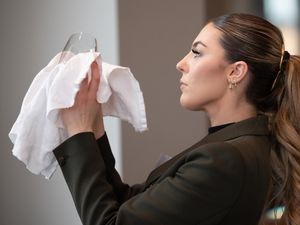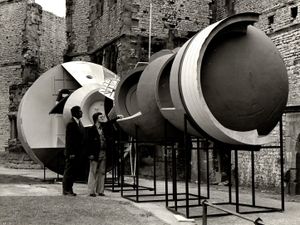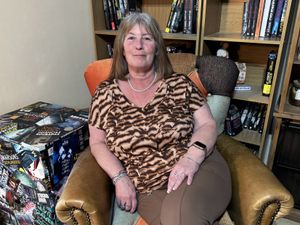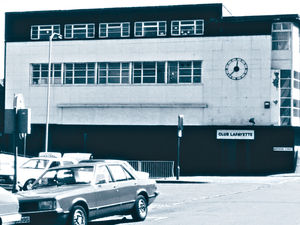Kate Winslet on the journalist who put Nazis in focus
Even the briefest of glances over a biography of American model, muse, photographer and photojournalist Lee Miller makes clear that, as actress Kate Winslet describes, “she had an incredible zest for life”.
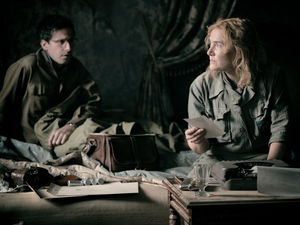
“She was somebody who lived life at full throttle, and she just believed in being authentic and telling the truth, being her truthful self,” says Winslet, who is portraying Lee Miller in biopic, Lee.
From living and working with surrealist artists in Paris in the late 1920s and early 1930s, to living in Cairo and producing such striking photographs that they influenced the artist Magritte, to settling down briefly in London before embarking on a new career as the official war photographer for Vogue magazine, Miller’s life and career was rich, varied, and unarguably significant.
Her wartime work, which Ellen Kuras’ directorial debut predominantly focuses on, included portraits of nurses on the front lines, the first use of napalm at the siege of St Malo, the liberation of Paris, the horrors of the Nazi concentration camps at Buchenwald and Dachau, and even a photograph of herself bathing in Adolf Hitler’s bathtub on the day of his suicide.
Capturing the essence of the unwaveringly brave, bold and vital woman that Lee Miller was, was therefore a “long process” for Winslet, who was keen to accurately portray the incredible woman for the big screen.
“I think, through that experience of spending time with (Miller’s son) Tony Penrose and really immersing myself in the archival material, of which there is a lot, I kind of gradually became more and more familiar with who she was and her energy…” says the Oscar, Grammy, Emmy, Bafta and Golden Globe-winning Winslet, 48.
“I had access to letters that she’d shared between herself and (British Vogue editor) Audrey Withers. She’d written to (her husband) Roland, he’d written to her when she was away. I mean, I had access to just all of it.
“And, of course, that camera, and understanding the camera and how to use it was one thing, but also understanding what it was that motivated Lee to want to document the images of the voiceless victims of conflict and to reveal their truth.
“Because so much of the truth of what was happening in the Second World War was kept hidden, and she wouldn’t stop until she had revealed those truths, really, to the world but, in particular, to the female readers of Vogue.”
While photographing the Second World War, Miller worked closely with fellow American photographer David E Scherman, who was a correspondent for Life magazine.
It was Scherman who took the photograph of Miller in the bathtub of Hitler’s apartment in Munich, the dust of Dachau on her boots dirtying the bathroom floor, and the pair formed a close bond throughout their time in Europe.
In Lee, Scherman is portrayed by Andy Samberg, a comedian known for his work on Brooklyn Nine-Nine and other comedy projects.
Being part of this dramatic film was, therefore, quite a departure for Samberg, who says he “was a little nervous about it, for sure, especially once I realised who else was in the cast”.
“But Kate helped me through it,” adds Samberg, 46.
“She helped me prep. She gave me a lot of back information about David Scherman and Lee and their whole situation.
“I tried to prepare for it and treat it the way that people who do dramas treat their work, and I found that quite helpful, actually – it’s a completely different direction to approach acting from.
“It was interesting and challenging, and I was relieved that I felt like they took good care of me.”
“It was just a delight, honestly, and incredible to see him do something so, so different,” adds Winslet of working with Samberg.
“He was nervous … he was worried that people would expect that he was going to be funny, and how was he going to get through all of that? I just kept saying to him, ‘Look, you’re going to walk on that set and you’re going to open your mouth and you’re going to sound like and look like David Scherman, and you’re going to forget all that. It’s going to evaporate’. And it did.”
The biographical drama also follows Miller’s romantic relationship with artist Roland Penrose, which began before the outbreak of war. Penrose is played by The Northman star Alexander Skarsgard, who reflects on the way the film portrays how their dynamic changes as Miller goes into the belly of the beast while he remains in London, using his artistic skills as a teacher of camouflage.
“When we first meet them, it’s romantic: it’s the south of France, and it’s passionate and beautiful,” says Skarsgard, 48.
“When they’re back in London, and when Lee is adamant about going into the theatre of war, Roland is very concerned. He loves her so much and worships her, and it creates friction within Roland, I think, because he knows that this is something that she has to do, but it will come at a great price, a great cost to her and their relationship.
“She felt the need to give a voice to the voiceless. And basically risk herself, and sacrifice herself for that. Which is beautiful, but also heartbreaking for Roland.”
Despite going through hell to capture the most visceral and remarkable photographs of war and genocide, Miller struggled to get Vogue to publish her most striking images when she returned to London.
Andrea Riseborough, 42, star of The Long Walk to Finchley and To Leslie, joins the cast as British Vogue editor Audrey Withers, who led the magazine from 1940 to 1960 and who fought to ensure Miller’s images were published.
“She has a huge battle on her hands once these horrendous images are captured by Lee, especially at Dachau, to have them published,” explains Riseborough.
“Everybody’s been through a massive war effort, the government decides that it’s not the best thing to then publicise that. I mean, it broke Lee … to have lived through that and then to not have it be seen is just unimaginable.
“And really, Audrey, I think she carried that guilt of not being able to have won that battle. So the way that she tried to make reparation was to print them in American Vogue, which they were.
“When you think about it now, (it) is extraordinary that those images were printed in American Vogue.”
Lee is in cinemas now.

